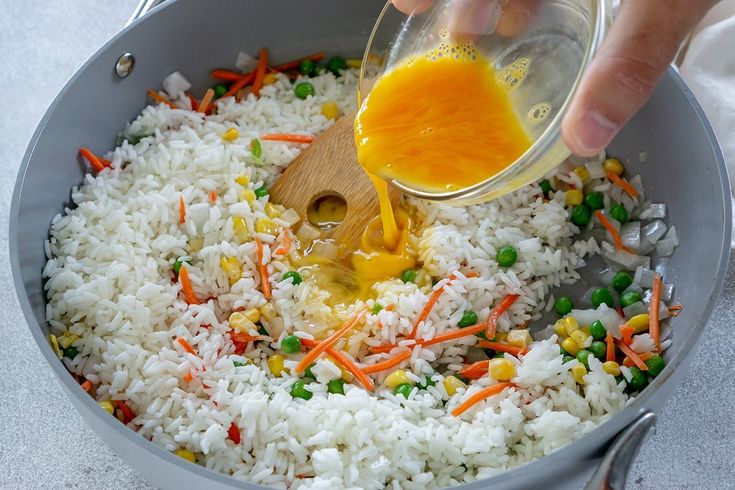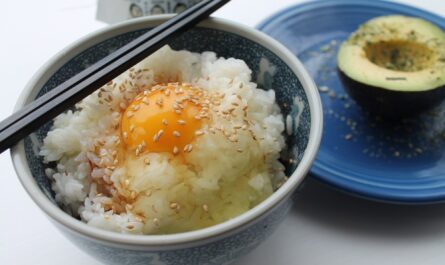It’s a common culinary dilemma to find yourself with a mountain of leftover rice after finishing a hearty meal. Fortunately, learning how to reheat leftover rice can transform your next meal into something equally delightful. Reheating rice seems straightforward, but it’s worth diving into some specific methods that ensure maximum flavor and perfect texture every time. Whether you’re using a microwave, stovetop, or oven, the journey to reheat leftover rice is paved with guidelines to maintain taste and safety.

The Importance of Reheating Rice Properly
Reheating rice is more than a casual kitchen taskit’s an art that requires precision and care. Not only can rice lose its plumpness and flavor during the reheating process, but it can also become a breeding ground for bacteria if left at room temperature for too long. Bacillus cereus, a bacteria commonly associated with improperly stored rice, can cause food poisoning. For optimal safety, it’s crucial that you know how to reheat leftover rice in a way that preserves the moisture while ensuring it’s safe for consumption.
Microwave Magic
This is perhaps the quickest method to reheat rice, making it ideal for busy nights or last-minute meal planning. First, transfer the rice to a microwavable dish and break up any clumps with a fork. Add a splash of water or broth to the rice to reintroduce moisture. Cover the dish with a damp paper towel or a microwavable lid to trap steam. Microwave on high in one-minute intervals, stirring between each session, until the rice is heated thoroughly throughout. Using a microwave rice cooker can also be a convenient option for more even heating.
Stovetop Simplicity
The stovetop method is excellent for when you have a bit more time and want to use leftover rice as a base for a more elaborate dish, such as a stir-fry or a side for curry. Begin by placing your rice in a pan over medium heat. Add a small amount of water or broth and occasionally stir to avoid sticking and burning. Using a nonstick pan helps ensure easy stirring and even heating. In about 5-10 minutes, your rice should be perfectly heated and mixed with a touch of flavor from the added liquid.
Oven Method Mastery
The oven method is ideal for reheating large quantities of rice for family gatherings or meal preps. Preheat your oven to 300F (150C). Spread the rice evenly in an oven-safe dish so that it forms a thin layer. Sprinkle lightly with water and seal the dish tightly with aluminum foil. This will create steam inside the dish to heat the rice evenly without drying it out. Bake for about 15-20 minutes, then check to ensure that the rice is heated thoroughly before serving. The trick is in using an oven-safe dish that allows for even distribution of heat.
Adding Flavor to Reheated Rice
To make reheated rice more exciting, consider enhancing it with aromatics and ingredients like ginger, garlic, soy sauce, or even a touch of sesame oil. These flavors can provide a fresh twist on your rice, drawing inspiration from dishes such as Fried Rice that makes use of leftovers spectacularly well.
Safe Storage and Handling
Before you embark on your reheating journey, it’s important to properly store your rice after initially cooking it. Transfer cooked rice into an airtight container as soon as it reaches room temperature. Refrigerate promptly to minimize bacterial growth. Stored appropriately in the refrigerator, leftover rice can stay good for up to four days, making it a versatile ingredient for a wide array of dishes.
Creative Uses for Reheated Rice
Reheated rice doesn’t have to be a mundane side dish. There are countless ways to creatively use your leftover rice to enhance your weekly menu. For instance, transform leftover rice into a crispy rice cake by pan-frying it with some veggies, or create a hearty soup by adding rice to a broth base with your favorite seasonings. You can also experiment with rice in salads or create desserts such as rice pudding. The sky’s the limit to what you can achieve with a little creativity.
Eco-Friendly Reheating Tips
In our world today, being conscious of our carbon footprint is essential. Using eco-friendly cookware like a rice cooker and a high-quality set of knives can make a significant difference. Not only are they energy efficient, but they also help maintain the integrity of your food, making each dish more delightful.

Cleaning After The Feast
After delighting in your perfectly reheated rice, its important to clean your kitchenware promptly. A suitable cookware cleaner ensures any residues are removed effectively, and a well-oiled cutting board remains in excellent condition. Keeping your tools in top shape means theyll be ready for your next culinary adventure.
Mastering how to reheat leftover rice can enrich your meals, reduce waste, and even open the door to exciting new culinary creations. By understanding the methods and nuances of reheating rice, you’re all set for any gastronomic challenge. Using these techniques will ensure every bite is delightful, safe, and sustainable.
This article contains affiliate links. We may earn a commission at no extra cost to you.



